After studying law in Paris and London, Philippe Dupont co-founded in 1988 a law firm in Luxembourg. He advises in banking law both nationally and internationally. His art collection has been growing along his career for over 30 years, encompassing works in different media by various artists, from David Hammons to William Kentridge. He and his wife Françoise have also been supporting African-American artists, such as Jeff Sonhouse and Noel Anderson.
Philippe Dupont told LARRY’S LIST about the lithograph of Dali he got as his 18th birthday present, how Pierre Soulages has influenced his collection, the various figurative artists in his collection, why it is important for him to meet the artists, and the art scene in Luxembourg.
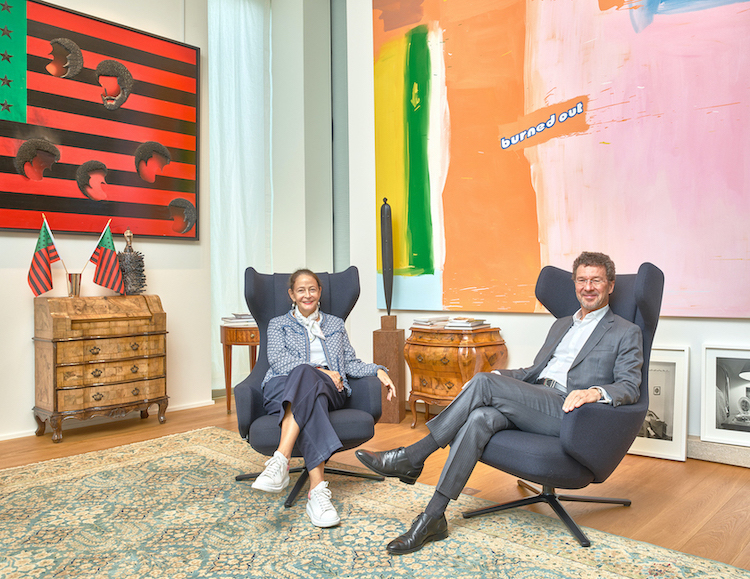
Collecting
What made you want to start collecting art? What is the main motivation behind your collecting?
I was interested in art since I was young. For my 18th birthday, my parents offered me a wonderful lithograph of Dali. This was the start of a journey that ended in a collection. My initial purchases were not designed to create a collection, they ended up becoming a small one.
When did you fall in love with a piece of art? What was it?
The first artist I met was a friend of my family named Joseph Probst, who lived in the same village as my grandparents. He was an abstract painter, and we would spend a lot of time at his place when I was a child. His works were the first I fell in love with.
What is your focus regarding the artists in your collection? Are you more interested in emerging or renowned artists?
I am interested in good artists irrespective of whether emerging or renowned. I love to discover young and talented artists and then follow them during their career.
What is the theme that unites all the works you have acquired?
My collection is a series of “coups de cœur”, works that move me and with which I can build an emotional relationship. It happens that “black” as a colour is dominant in my collection, probably under the influence of Pierre Soulages whose work I admire for decades.
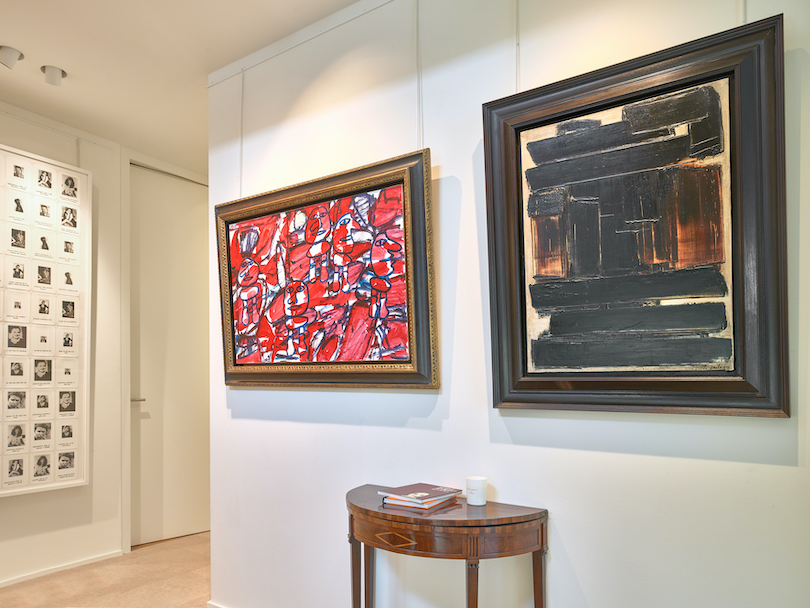
Why are you particularly interested in the work of Jeff Sonhouse?
Jeff has developed his very personal style that combines a questioning but still strong reference to art historical concepts with contemporary fashion elements and the use of different techniques (painting , collage) and of particular materials, like matches or copper wool. This leads to unique representations of African American male portraits, portraits that are actually more than portraits of a known person – they are rather characters that Jeff has created and that are his own.
Who are other figurative or portrait artists in your collection?
I have amongst others a few body prints of David Hammons, drawings of Toyin Ojih Odutola, a nice painting/collage of artists like Njideka Akunyili Crosby, and works by Nina Abney Chanel, Derick Adams, Noel Anderson, Yashua Klos, Mustapha Maluka, Kenturah Davis, Godwin Champs Namuyimba, Emmanuel Taku and others. They all have their own distinctive style and approach.
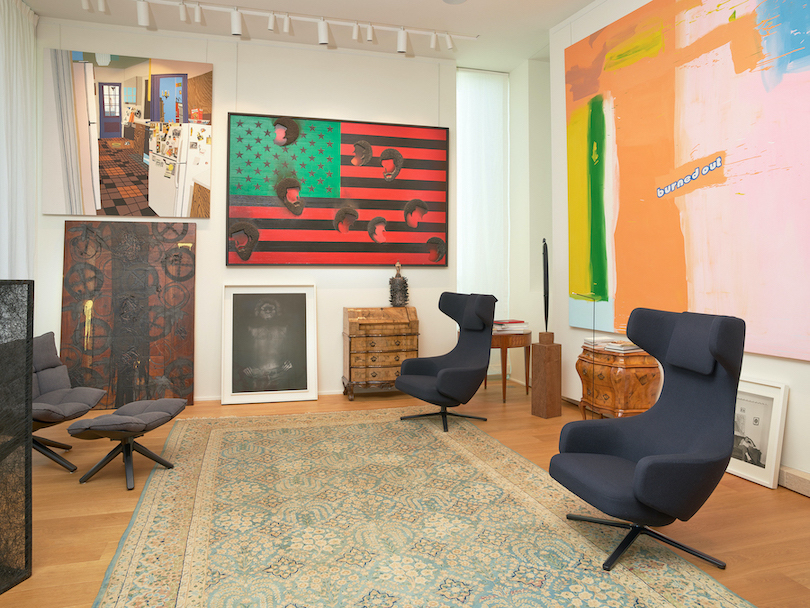
What were the first and the latest artworks you purchased?
The first work I bought was an abstract painting by Luxembourg artist Joseph Probst, and the last ones I bought are works by Marcel Odenbach (a great artist who is, in my view, largely underestimated) and by William Kentridge.
How many artworks do you own? Where do you display your collection?
My collection also includes photography, and I own roughly 180 works. The works are essentially displayed at my house. I am generally quite open to lend works for museum shows, but otherwise quite discreet.
Have you ever presented, or would you wish to present, your art collection publicly?
Some of my works were included in museum shows. I generally like to be discreet about my collection and do not look for any recognition . As said, I am however open to lend works for serious public exhibitions.
What considerations guide you to make a purchase?
I am very unreasonable. In fact, I am guided by my emotions, which, however, do not generally come out of the blue, but rather after having seen works of the artist in the past, either physically first or on the Internet.
How important is it for you to meet the artists who created the artwork?
Meeting the artist makes a huge difference. Understanding the artist, the way he thinks and works gives another dimension, another perspective of his work. Very often, after an encounter with the artist, you see things in the works you have purchased that you had not noticed before.
Through what channels do you discover artists and artworks?
Art galleries made me discover most artists of my collection. But I also read a lot of art magazines; I follow art on social media; I go to art fairs and museums; and through all these channels, I discover new talents or rediscover established artists.
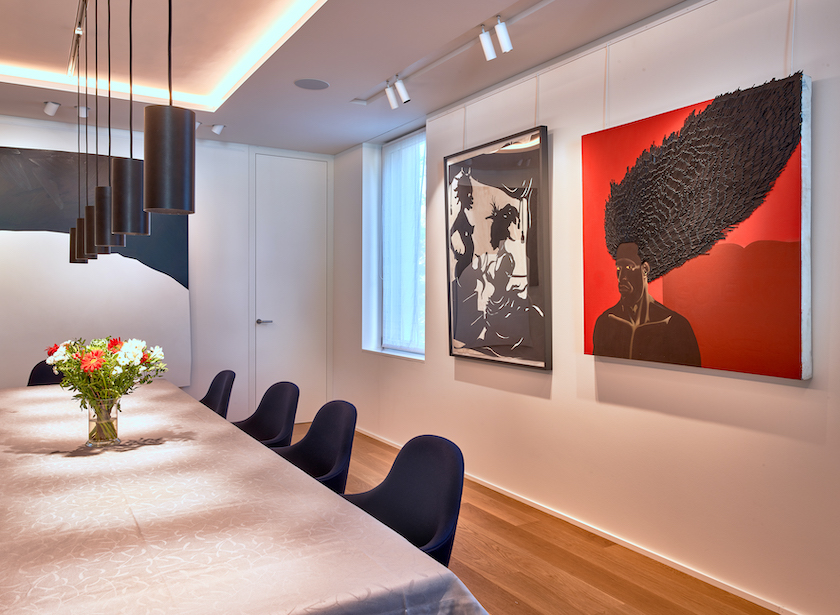
Kara Walker, and Jeff Sonhouse.
The art scene in Luxembourg
What was your happiest moment being involved in art?
I don’t think that there is one specific moment. All these wonderful moments of encounters and exchanges with artists and gallerists are special to my wife Françoise and me.
How is the art scene in Luxembourg?
Luxembourg has an interesting art scene, with quite a few talented artists. People of 165 nationalities live in the city of Luxembourg which creates a great cosmopolite environnement, favourable for the development of a lively art scene. Mudam, the Luxembourg museum of contemporary art, and galleries, such as Zidoun-Bossuyt, Nossbaum Reding, and Ceysson Bénétière immensely contribute to bringing art closer to a large public.
Can you name three emerging artists who should be on our radar?
There are many great artists, and I find it difficult to name three more specifically. In my view, we are only at the beginning of the development of African-American art, and Africa remains a largely unexplored territory.
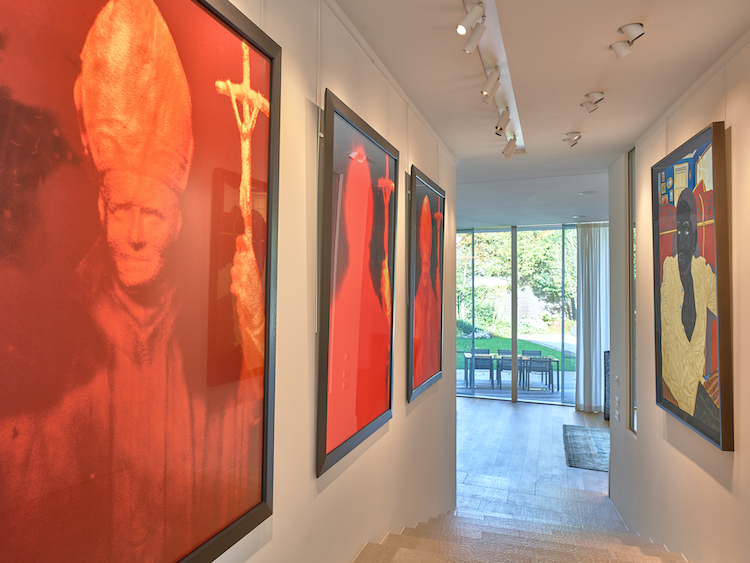
Toyin Ojih Odutola (right).
What are you especially excited about in regard to art in the next 12 months?
I am happy that travel restrictions are being relaxed. and that my wife and I will at last be able to visit museum and gallery shows abroad again. Fortunately, during the lockdown months, we had an exceptional programme around the work of William Kentridge in Luxembourg with a fantastic show at Mudam, a great concert at the Philharmonie, and an unforgettable opera performance of Sibyl at the Grand Théatre. The 2022 programme at Mudam looks also very exciting with, amongst others, a major exhibition of the works of Lynette Yiadom-Boakye.
All image courtesy of Philippe Dupont
Related: Jeff Sonhouse – BODIED, till 6 November, at Zidoun-Bossuyt Gallery
A selection of artists Philippe collects:
David Hammons
Jeff Sonhouse
Nina Abney Chanel
Njideka Akunyili Crosby
The interview was facilitated by Audrey Bossuyt.
By Ricko Leung





